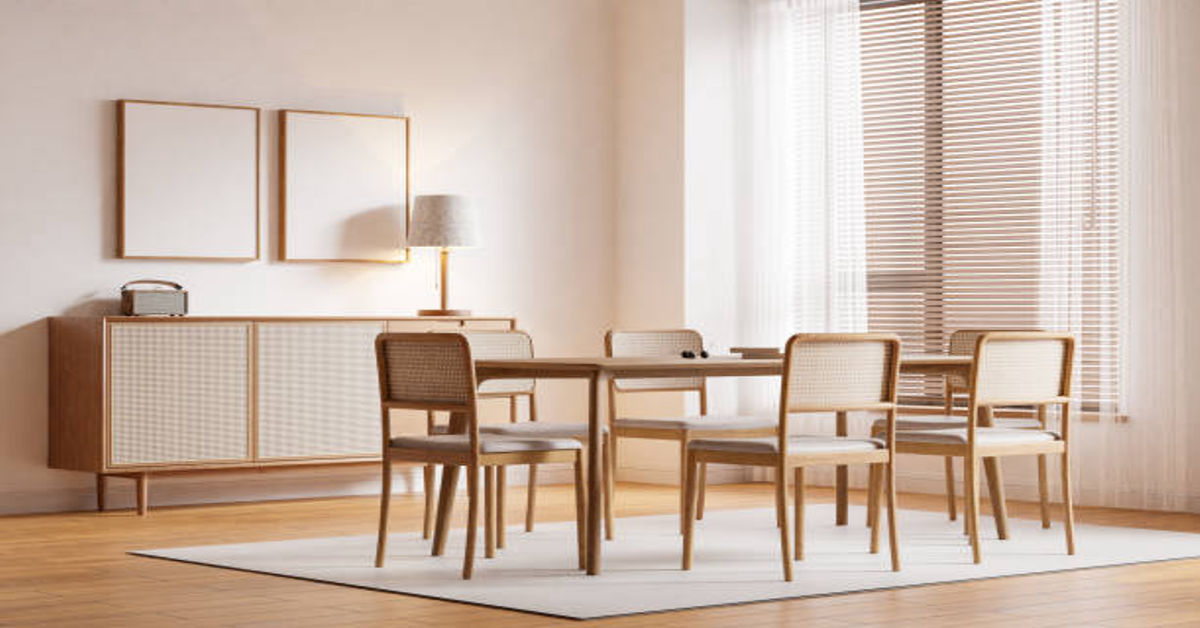A dining room is often considered the heart of a home, a place where families gather for meals, celebrations, and conversations. The centerpiece of this space is the dining room set, which typically includes a table and matching chairs, and sometimes additional pieces like benches, sideboards, or hutch cabinets. Selecting the right dining room set is not merely a question of aesthetics; it involves considerations such as room size, functionality, material durability, style cohesion, seating capacity, and lifestyle requirements. A well-chosen dining set can enhance the ambiance of the home, provide comfort for daily use, and even serve as a long-term investment. This article provides a detailed, original, and comprehensive exploration of dining room sets, including types, materials, sizes, style tips, arrangement guidance, maintenance practices, and buying considerations, with supporting tables for clarity.
1. Understanding Dining Room Sets
A dining room set refers to a coordinated collection of furniture designed for dining purposes. At its core, it includes a table and chairs that match in style, design, or material. Modern dining room sets can also include:
- Benches: Often paired with long tables to increase seating capacity while maintaining a streamlined look.
- Buffets or Sideboards: Used for storage of tableware, linens, or serving dishes.
- Hutches or Cabinets: Display cabinets for fine china, glassware, or decorative items.
Dining room sets serve both functional and decorative purposes. Functionally, they provide comfortable seating and a sturdy surface for meals, homework, work-from-home activities, or social gatherings. Decoratively, they contribute to the room’s theme, harmonize with surrounding furniture, and create a visually balanced environment.
2. Common Types of Dining Room Sets
Dining room sets can be categorized based on shape, style, and seating configuration. Understanding these distinctions helps buyers select a set that aligns with room layout, household needs, and aesthetic preferences.
| Type | Description | Seating Capacity | Ideal Space |
|---|---|---|---|
| Rectangular | Traditional, long table; chairs on sides | 4–12 | Long rooms, formal dining areas |
| Square | Balanced, symmetrical design | 4–6 | Smaller rooms, intimate gatherings |
| Round | Circular table; promotes conversation | 4–8 | Compact rooms, family-friendly spaces |
| Oval | Combination of rectangular and round benefits | 4–10 | Medium to large rooms |
| Extendable / Expandable | Table with foldable or sliding extensions | 4–12+ | Flexible seating, hosting guests |
| Pedestal | Central base instead of legs | 4–8 | Maximizes legroom, modern style |
| Counter-Height / Bar Sets | Taller tables with stools | 2–6 | Breakfast nooks, casual spaces |
| Bench Dining Sets | Includes bench seating | 4–10 | Casual or rustic décor, space-saving |
Each type offers distinct advantages. For instance, round tables are excellent for encouraging conversation and avoiding sharp corners, while rectangular tables suit formal dinner settings and larger gatherings. Expandable tables offer flexibility, making them a practical choice for those hosting guests occasionally.
3. Materials Used in Dining Room Sets
The material of a dining room set affects its durability, maintenance, comfort, and style. Modern sets come in a variety of materials, each with its advantages and care requirements.
| Material | Characteristics | Durability | Maintenance | Style & Use |
|---|---|---|---|---|
| Solid Wood (Oak, Maple, Walnut) | Timeless, strong, natural grain | High | Dusting, occasional polishing | Classic, rustic, traditional |
| Engineered Wood / MDF | Affordable, consistent finish | Medium | Avoid moisture, wipe with damp cloth | Contemporary, budget-friendly |
| Glass | Transparent top, modern look | Medium | Clean fingerprints, fragile | Modern, minimalist, formal dining |
| Metal (Steel, Aluminum) | Industrial look, sturdy | High | Wipe down, avoid rust | Industrial, modern lofts |
| Marble or Stone | Elegant, heavy, luxurious | Very high | Sealant maintenance, careful use | Luxury, formal settings |
| Upholstered Chairs | Fabric or leather seating | Medium | Vacuum, clean spills | Comfortable, modern or classic |
| Plastic / Polycarbonate | Lightweight, easy to clean | Medium | Wipe with damp cloth | Casual, outdoor-friendly |
Material selection depends on household needs: families with young children may prefer durable, easy-to-clean surfaces like glass or engineered wood, while those seeking a traditional, long-lasting look may opt for solid hardwood with upholstered chairs.
4. Choosing the Right Size for Your Dining Room Set
Selecting a dining room set involves balancing table size, room dimensions, and seating requirements. Improper sizing can make a room feel cramped or underutilized.
Step 1: Measure Your Dining Space
Measure the room’s length and width, including clearance for chairs to move comfortably. A minimum of 36 inches (91 cm) around the table is recommended for chair movement.
Step 2: Determine Table Dimensions
- Rectangular tables: Allow 24 inches (61 cm) per person along the length for comfortable seating.
- Round tables: Diameter determines seating; 48 inches (122 cm) for four, 60 inches (152 cm) for six.
- Square tables: 36–42 inches (91–107 cm) per side suits 4–6 people.
Step 3: Consider Expandable Options
Expandable tables are ideal for smaller rooms that occasionally host larger gatherings, offering flexibility without permanent space commitment.
| Table Type | Typical Dimensions | Seats Comfortably | Clearance Required |
|---|---|---|---|
| 4-Person Rectangular | 48–54″ L x 30″ W | 4 | 36″ around table |
| 6-Person Rectangular | 60–72″ L x 36″ W | 6 | 36″ around table |
| 8-Person Rectangular | 72–96″ L x 40″ W | 8 | 36–42″ around table |
| Round Table | 48–60″ Diameter | 4–6 | 36″ around table |
| Square Table | 36–42″ per side | 4–6 | 36″ around table |
5. Styles and Aesthetic Considerations
Dining room sets are available in numerous design styles, allowing homeowners to match their space’s overall décor theme.
Popular Styles
- Traditional: Rich woods, ornate carvings, formal appearance.
- Modern / Contemporary: Minimalist lines, metal/glass elements, neutral tones.
- Rustic / Farmhouse: Solid wood, distressed finishes, benches, cozy vibe.
- Industrial: Metal frames, raw wood, exposed joints, urban feel.
- Scandinavian: Light woods, simple lines, functionality-driven aesthetics.
- Luxury / Classic European: Marble, velvet upholstery, intricate details, opulent appearance.
Color coordination is essential: dark woods convey formality, light woods and glass create airy spaces, and metals or bold colors add contemporary flair.
6. Arrangement Tips for Dining Room Sets
Proper arrangement ensures a dining room is both functional and visually appealing.
- Central Placement: Position the table in the center for balanced aesthetics and equal clearance around the table.
- Wall Alignment: For narrow rooms, align the table along the longer side to save space.
- Layering Decor: Use rugs, centerpieces, and lighting to highlight the dining set.
- Lighting: Pendant lights or chandeliers centered over the table enhance focus and ambience.
- Space Optimization: Leave 36–42 inches (91–107 cm) around chairs for comfortable movement.
Example Table Arrangement
| Room Size | Table Shape | Recommended Chairs | Clearance Required |
|---|---|---|---|
| 10×12 ft | Rectangular | 4–6 | 36″ around table |
| 12×14 ft | Rectangular / Extendable | 6–8 | 36–42″ around table |
| 10×10 ft | Round | 4 | 36″ around table |
| 14×16 ft | Oval / Pedestal | 8–10 | 36–42″ around table |
7. Maintenance and Care of Dining Room Sets
Proper maintenance prolongs the life and appearance of dining sets. Each material requires specific care practices:
Wood
- Dust weekly, polish occasionally.
- Wipe spills immediately to avoid staining.
- Avoid direct sunlight to prevent fading.
Glass
- Clean fingerprints with glass cleaner.
- Use coasters to avoid scratches.
- Avoid heavy impact to prevent shattering.
Metal
- Wipe with damp cloth; dry thoroughly to prevent rust.
- Avoid abrasive cleaners that scratch the finish.
Upholstery
- Vacuum fabric chairs regularly.
- Treat stains promptly with mild cleaning agents.
- Leather requires conditioning every 6–12 months.
General Tips
- Avoid placing hot cookware directly on the table surface.
- Use placemats or tablecloths to reduce scratches.
- Tighten screws on chairs and tables periodically to maintain stability.
8. Buying Considerations for Dining Room Sets
When purchasing a dining room set, keep the following in mind:
- Budget: Dining sets range from budget-friendly to luxury. Balance quality, durability, and cost.
- Room Size: Ensure the set fits comfortably without overcrowding.
- Material Durability: Choose materials suitable for daily use or occasional formal dining.
- Style Compatibility: Match set style with existing décor and interior color palette.
- Comfort: Test chair seating comfort, height, and back support.
- Flexibility: Consider extendable tables or modular seating for future adaptability.
- Assembly: Check whether the set requires assembly or comes pre-assembled.
- Warranty & Support: Opt for manufacturers that offer warranty, customer support, and replacement parts.
9. Dining Room Set Trends in 2025
- Sustainable Materials: Eco-friendly wood, recycled metal, and sustainable fabrics.
- Mixed Materials: Combining wood, metal, and glass for modern aesthetics.
- Multifunctional Sets: Tables with hidden storage or convertible tops.
- Compact Solutions: Foldable tables, modular chairs, and benches for small apartments.
- Bold Colors: Chairs in vibrant hues or patterned upholstery for statement dining areas.
10. FAQs
1. What is included in a standard dining room set?
Typically, a dining table and matching chairs. Some sets include benches, sideboards, or hutch cabinets for storage and display.
2. How do I choose the right dining room set size?
Measure your room, allow 36–42 inches around the table for movement, and select a table that accommodates your seating needs comfortably.
3. What materials are best for durability?
Solid wood and metal sets offer the highest durability; engineered wood, glass, and upholstered chairs are suitable with proper care.
4. How do I maintain my dining room set?
Dust wood regularly, clean spills promptly, use coasters for hot items, vacuum upholstery, and avoid harsh chemicals.
5. Are expandable dining tables a good investment?
Yes, they provide flexibility for hosting guests while saving space for everyday use. They are practical for both small and large dining areas.









